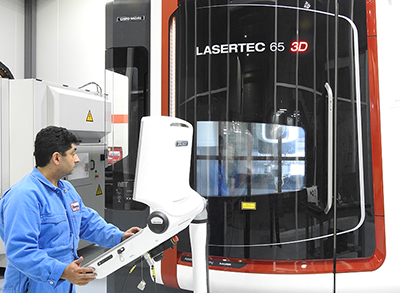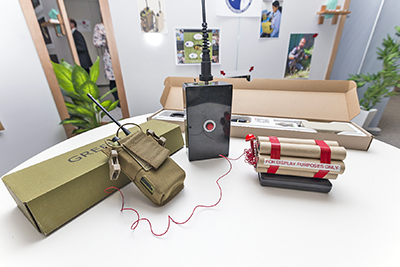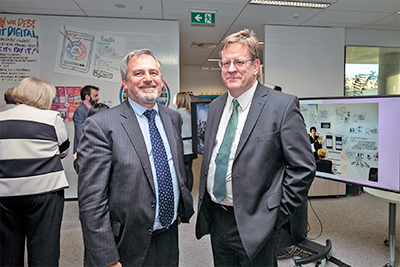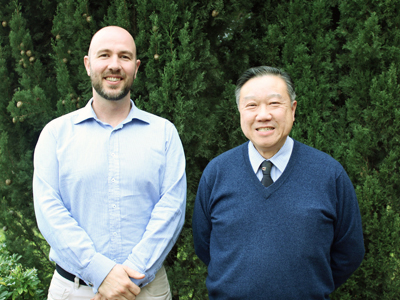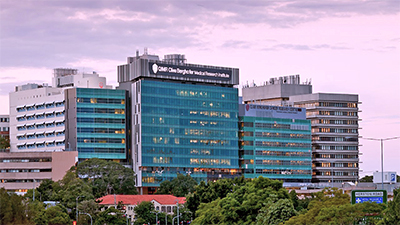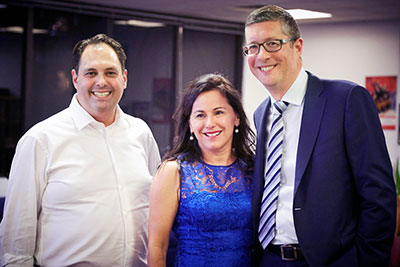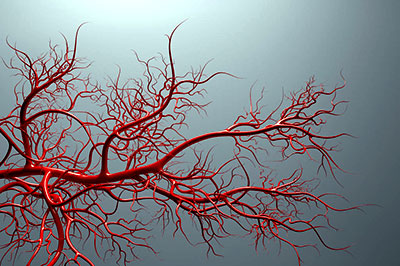THE AUSTRALIAN Nuclear Science and Technology Organisation (ANSTO) has developed nuclear interrogation techniques to help understand and sustain groundwater resources across Australia.
Groundwater research at ANSTO has provided crucial information to answer questions about groundwater recharge, groundwater age and dynamics, the interaction between surface water and groundwater and salinisation.
ANSTO groundwater researcher, Karina Meredith said in undertaking groundwater investigations, environmental isotopes were important tools in tracing and understanding the hydrological cycle, a continuous process in which water is circulated between ocean, atmosphere and land. 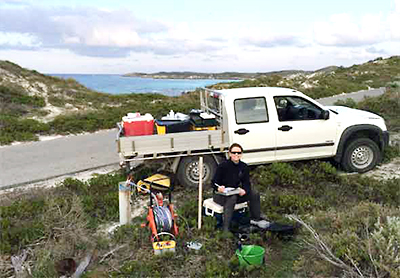
Ms Meredith uses stable and radioactive isotopic techniques in projects across Australia to determine the suitability and sustainability of groundwater resources. This water begins as rainfall or surface water that travelled from the surface to below the ground to become stored in porous soils and rock known as aquifers.
In research that commenced in 2007, Ms Meredith and co-investigators have measured the isotopic signatures of groundwater and its source waters in projects in the Great Artesian Basin, Darling River Basin, Canning Basin, Perth Basin, Ti Tree Basin and other locations.
“There is nothing simple or predictable about the flow and evolution of groundwater — as many factors such as, rainfall, temperature, vegetation, land use, soil type, geology, seawater intrusion, and human usage, impact on the available groundwater resource,” Ms Meredith said.
“But we can measure the groundwater chemistry of these resources in our laboratories to provide direct information about how the groundwater has interacted in the water cycle.”
Determining the source of groundwater replenishment or recharge, to the aquifer, is the subject of many of Ms Meredith’s collaborative investigations.
“It is important to understand the origin of water, where the water has been sourced from, whether it has come from a rainfall event, from surface water, such as a lake, whether it has mixed with other groundwater in a confined or unconfined system and how it is being replenished,” Ms Meredith said..
The ratio of isotopes for oxygen (18O/16O) and deuterium (2H/1H), an isotope of hydrogen, can be used to determine the source of the recharge, especially if the isotopic composition of the source of the water has been studied.
Meredith and co-investigators have established multi-year hydrochemical databases for rainfall and riverwaters sampled from drought and flood conditions for many catchment areas in Australia. Groundwater data can be plotted against these baselines to confirm the source of recharge.
Research on a semi-arid zone region of the Darling River catchment was published in a paper in the Journal of Hydrology in 2015.
The groundwater recharge process in semi-arid and arid areas, which characterises 70 percent of the Australian continent, is complicated by cyclic wetting and drying periods that occur throughout climatic history.
Just looking at information over a decade, groundwater recharge may not be significant, which is why long-term studies are needed to capture 10-100 year recharge events.
“Without this recharge information we cannot determine how quickly groundwater is being replenished which then allows us to calculate the sustainable volume of usable water within an aquifer,” Ms Meredith said..
“Determining the residence time of groundwater, how long it has been isolated form the atmosphere, is also important for estimating groundwater volume and we can do this by measuring radioactive isotopes.
“Typically groundwater studies commence with the development of a physical flow model to establish how much water there is, the flow path and flow rate and where it is likely to end up in a catchment.
Flow equations can be used to produce a model but they are only as good as the input data that goes into constructing them.
“Groundwater flow models cannot always explain all the variation observed in a groundwater system. This is where isotopic analysis can provide validation of the physical models,” said Meredith.
The radioactive decay of a suite of naturally occurring isotopes can be used to determine the groundwater residence time.
Specific isotopes are measured because they are indicative of defined periods in time based on their half-life. For the modern age, krypton, tritium and radon can be used.
Tritium (3H), an isotope of hydrogen that is naturally produced in the atmosphere by cosmic rays, is valuable in understanding modern groundwater recharge within the past 50 years.
“If we want to look at waters older than 1,000 years up to 30,000 years, we use radiocarbon,14C. Most of our deeper productive groundwater systems were recharged over that timescale,” Ms Meredith said.
How this works is that carbon dioxide from the atmosphere is recharged into the groundwater system, once the water containing the CO2 hits the watertable radioactive decay is considered to begin.
“Put simply, if you compare the groundwater data with atmospheric data, then you can create groundwater age maps of underground systems,” Ms Meredith said.
Meredith and collaborators used this approach successfully on a project in the West Canning Basin within the Pilbara region of Australia, where they found groundwater estimated at 6,000 years but they also discovered groundwater that was much older than what the physical models could predict.
The groundwater was closer to 30,000 years old.
Ms Meredith pointed out that although radiocarbon dating works well in the West Canning Basin, its use can be complicated at other sites especially by the presence of ‘dead’ carbon that contains no 14C within the soil profile.
“You can end up with an increase in dissolved inorganic carbon, which means you need to make a correction to the radiocarbon value,” she said.
There is an increasing level of complexity and parameters in correction models that can be applied especially in arid zone environments. 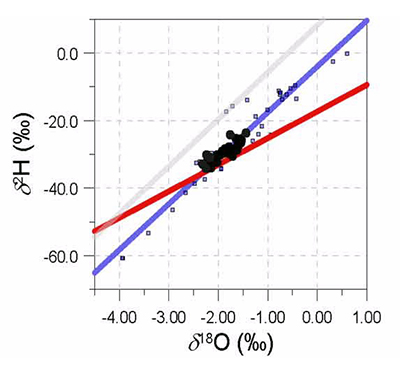
In order to test their age calculation within an arid zone system to see if all hypothetical dissolution pathways existed, they chose the Darling River Basin.
“We wanted to see how dissolved inorganic carbon evolved in the resultant groundwater, so we measured groundwater before and after a large flood event to see how the groundwater changed after recharge” Ms Meredith said.
To their surprise they found geochemical processes not previously accounted for had released inorganic carbon into the groundwater. The results are being published in Geochemica and Cosmochimica Acta.
“Water sediment interaction was leading to an increase in salinity, which then increased the dissolution of carbonate, which goes against what we normally see,” Ms Meredith said.
For groundwaters that are much older, such as those in Australia’s Great Artesian Basin up to millions of years old, isotopes of chlorine and krypton provide an indication of groundwater age.
In addition to extensive groundwater sampling, researchers also sample the surface water, rainfall, soil chemistry, soil gas and vegetation throughout a catchment.
“We do this because it gives us an understanding of the entire water cycle within a groundwater catchment providing clues on groundwater recharge, evaporation rates, and groundwater discharge points,” she said.
“Trace element isotopes, such as lithium, strontium and boron, help illuminate more complex hydrochemical processes, such as water sediment reactions, the source of water recharge, mixing of paleowaters and weathering processes.”
But even with expertise in the application of isotopes, it requires a considerable knowledge of geological, hydrological processes which lead to the distribution of these isotopes, biospheric interaction, and atmospheric processes that fractionate these isotopes before you can apply them to a system with confidence.
Groundwater researchers at ANSTO have acquired this expertise over many years in the field and in the lab.
“There are many challenges. Groundwater is a finite resource, but we are making good progress in understanding aquifer replenishment and providing water managers with useful information to guide their decision-making for the future.”
www.ansto.gov.au
ends
